Street Calls of the Week
Introduction & Market Context
Global Ship Lease (NYSE:GSL) presented its second quarter 2025 results on August 5, highlighting strong financial performance amid ongoing global trade disruptions. The container shipping specialist continues to benefit from its strategic focus on mid-size and smaller vessels, while navigating challenges including Red Sea security issues and U.S.-China trade tensions.
The company has maintained its emphasis on building contract cover and strengthening its balance sheet, positioning itself to weather potential market volatility while returning capital to shareholders through an increased dividend program.
Quarterly Performance Highlights
GSL reported solid financial results for Q2 2025, with revenue of $191.9 million generating a net income of $93.1 million. Adjusted EBITDA reached $134.2 million, while normalized net income stood at $95.1 million. This translated to earnings per share of $2.61 and normalized EPS of $2.67 for the quarter.
For the first half of 2025, the company recorded revenue of $382.8 million, net income of $214.1 million, and adjusted EBITDA of $266.5 million. Normalized net income for the six-month period was $189.4 million, with EPS and normalized EPS at $6.01 and $5.32, respectively.
As shown in the following financial results summary:
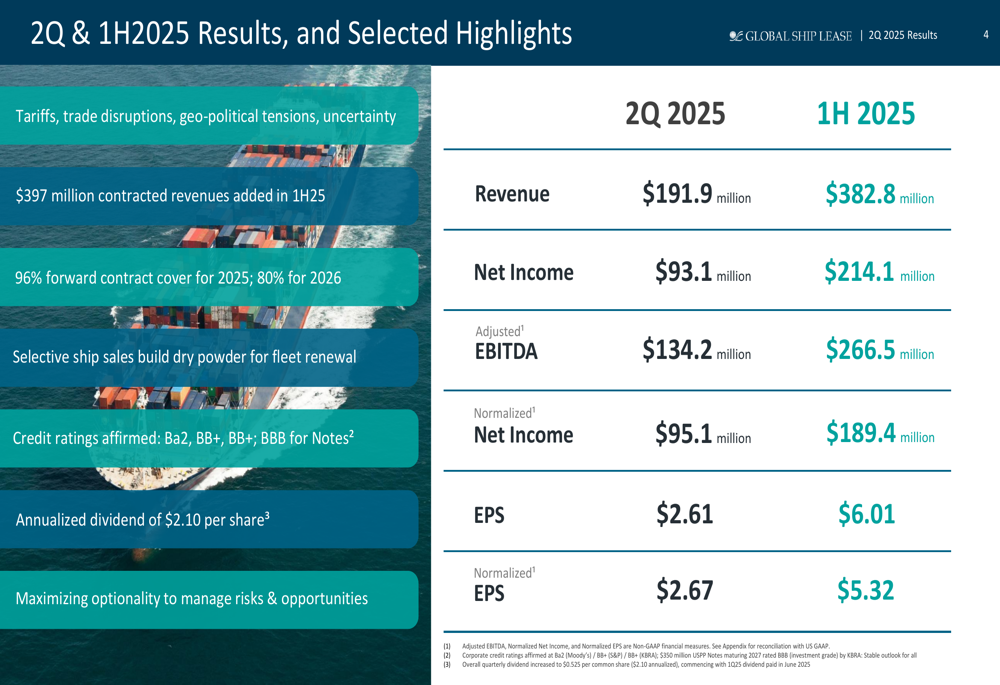
A key achievement during the first half of 2025 was the addition of $397 million in contracted revenues, strengthening the company’s forward visibility. As of June 30, 2025, GSL had secured $1.73 billion in contracted revenues with an average remaining contract duration of 2.1 years. The company has locked in 96% of its potential revenue for 2025 and 80% for 2026, providing substantial earnings visibility.
The contracted revenue is well-diversified across major container shipping lines, reducing counterparty risk. As illustrated in this charterer breakdown:
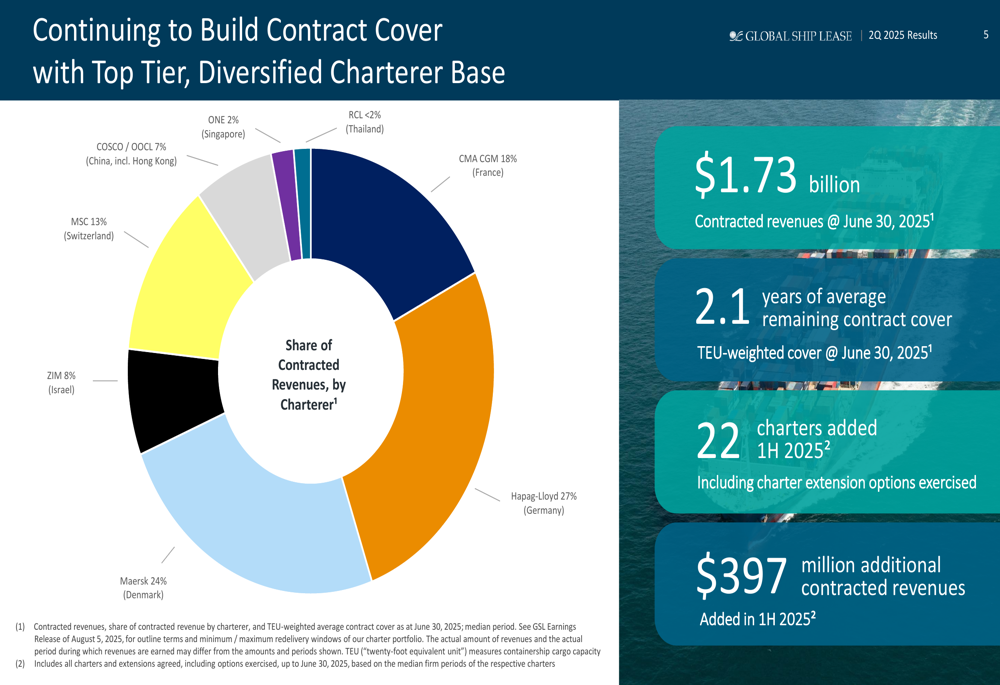
Strategic Positioning and Market Outlook
Global Ship Lease continues to focus on mid-size and smaller containerships (sub-10,000 TEU), particularly those with high reefer capacity. This segment serves approximately 74% of global containerized trade volume in non-mainlane trades, according to the company’s presentation.
The strategic positioning of GSL’s fleet is illustrated in the following global deployment map, which shows the widespread utilization of sub-10,000 TEU vessels compared to larger ships that primarily serve mainlane routes:
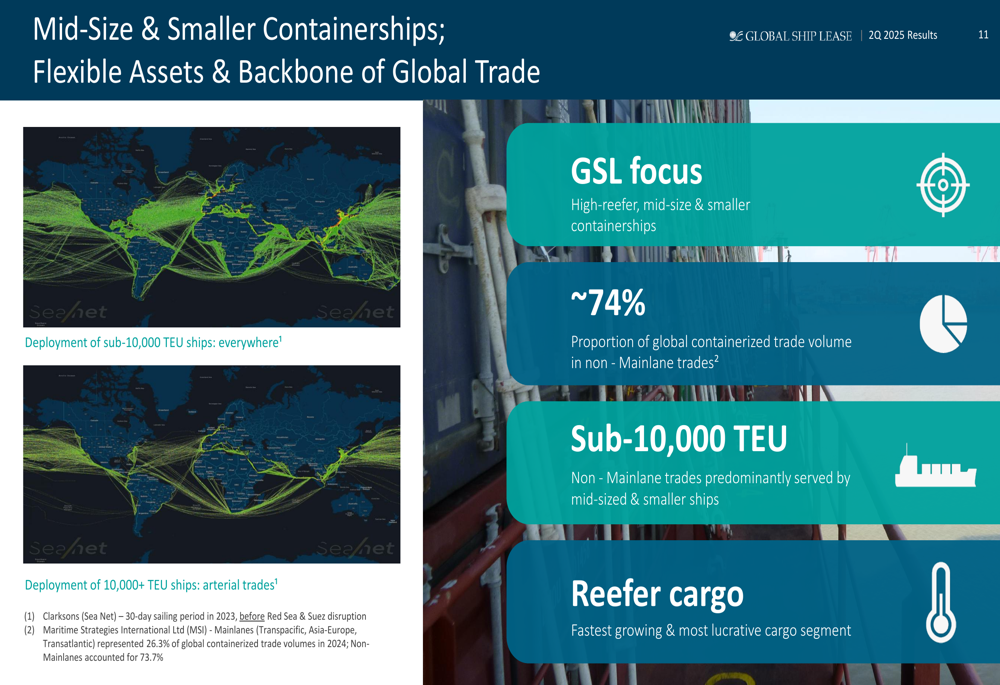
The company has strategically timed its vessel acquisitions and fleet development to capitalize on market cycles. This approach has created significant long-term value, as demonstrated in this historical chart showing key strategic decisions against market rate and asset value indices:
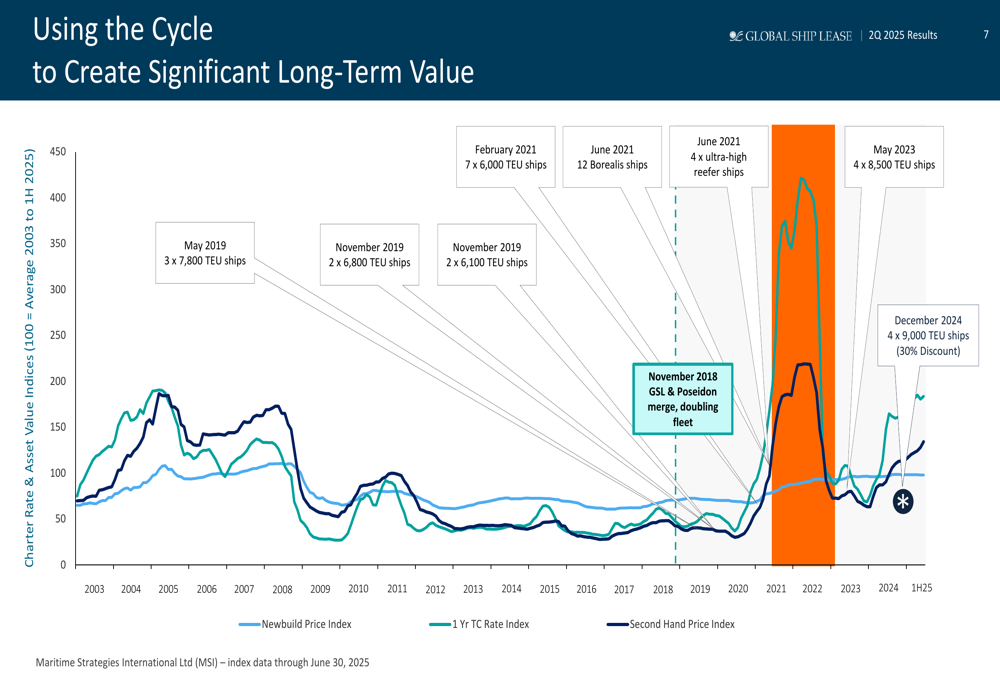
Current market conditions remain influenced by the Red Sea disruption, which has effectively reduced global shipping capacity by approximately 10%. With 20% of global containerized trade volumes and 34% of global containership fleet capacity previously deployed via the Suez Canal, the ongoing security issues continue to impact global shipping patterns and rates.
Balance Sheet Strength and Capital Allocation
GSL has made significant progress in strengthening its balance sheet, with gross debt reduced to $768.5 million as of June 30, 2025, while maintaining a strong cash position of $511.1 million. This represents substantial improvement from Q1 2025, when the company reported $428 million in cash and $778 million in gross debt.
The company’s de-leveraging efforts have reduced its adjusted net debt to adjusted EBITDA ratio to 0.7, down from 9.0 at the end of 2018. This financial discipline has earned GSL credit ratings of Ba2 from Moody’s and BB+ from both S&P and Fitch.
The company’s low cost of debt (4.18% blended rate) and declining break-even rates have enhanced profitability, as shown in the following chart:
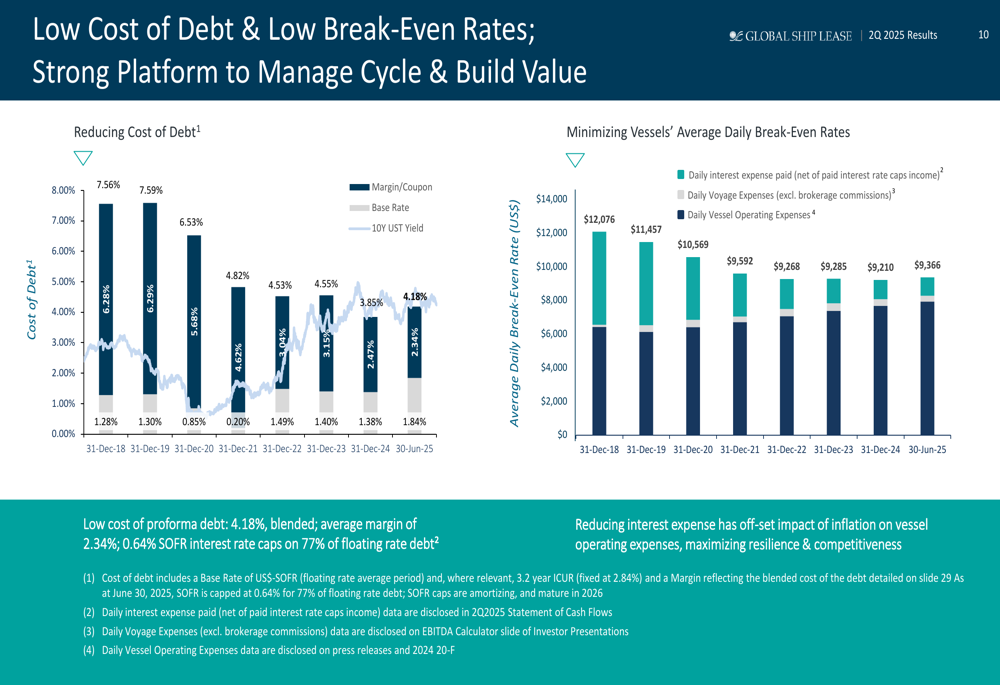
GSL’s capital allocation strategy balances several priorities: returning capital to shareholders, de-leveraging the balance sheet, investing in regulatory compliance and decarbonization, maintaining cash liquidity, and pursuing disciplined fleet renewal.
The company increased its quarterly dividend to $0.525 per share ($2.10 annualized), representing a 40% year-over-year increase from the $1.50 annualized dividend reported in Q1 2025. This provides shareholders with an attractive yield while the company maintains financial flexibility.
Forward-Looking Statements
Looking ahead, Global Ship Lease is focused on maximizing optionality to manage risks and capitalize on opportunities in an uncertain market environment. The company is selectively selling older vessels at cyclically attractive prices to build capital for fleet renewal, while maintaining its strong contract cover.
The global containership orderbook stands at 29.6% of the existing fleet, but only 12.0% for GSL’s focus segments (2,000-9,999 TEU), suggesting more favorable supply dynamics in the company’s target market. This orderbook data is illustrated in the following chart:
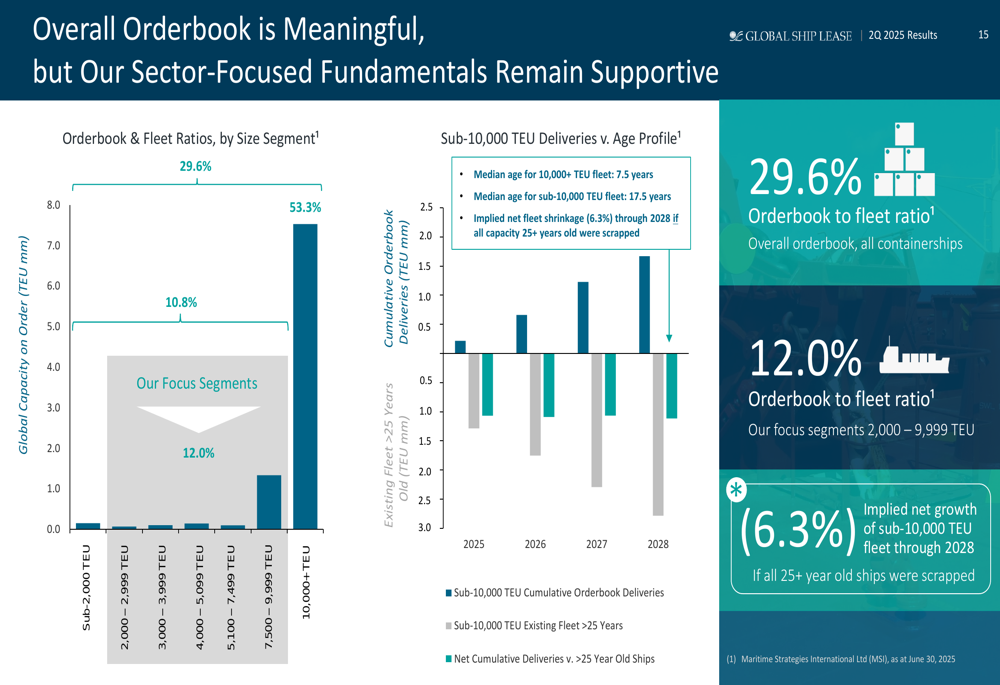
Management highlighted several potential challenges, including the unpredictable impact of U.S. tariffs on trade patterns, ongoing geopolitical tensions, and evolving decarbonization regulations. However, the company believes its strong financial position, high contract cover, and strategic focus on versatile vessel sizes position it well to navigate these uncertainties.
In summary, Global Ship Lease’s Q2 2025 presentation depicts a company with strong current performance, significant financial flexibility, and a strategic approach to balancing shareholder returns with long-term fleet development in a dynamic global shipping environment.
Full presentation:
This article was generated with the support of AI and reviewed by an editor. For more information see our T&C.
